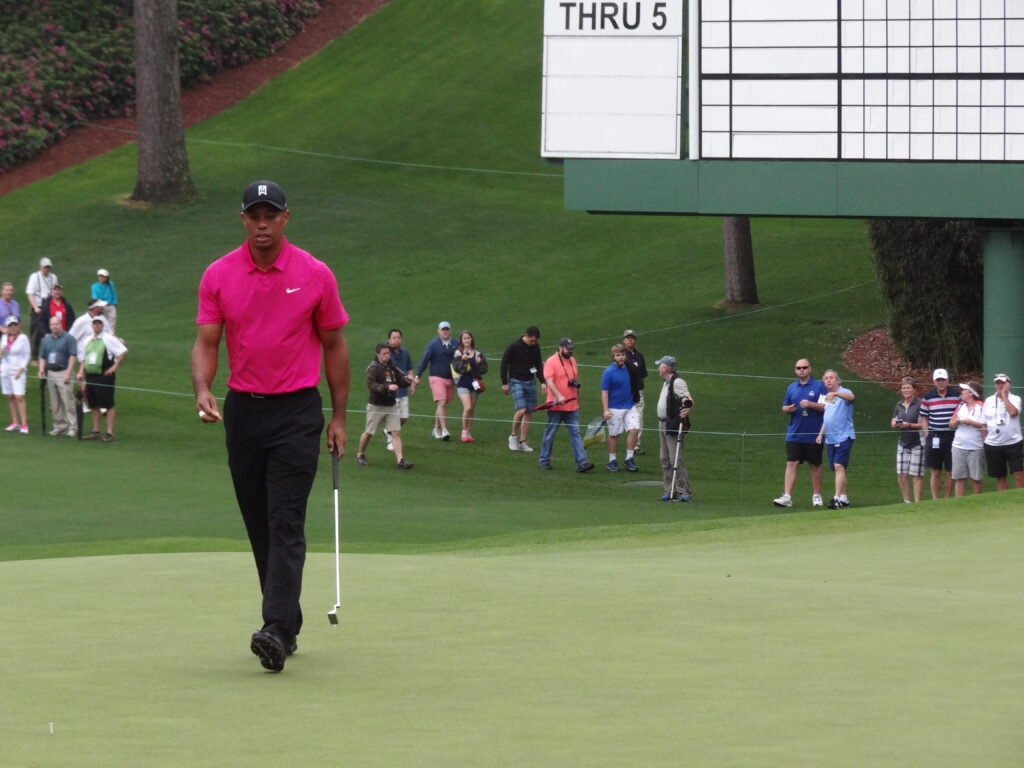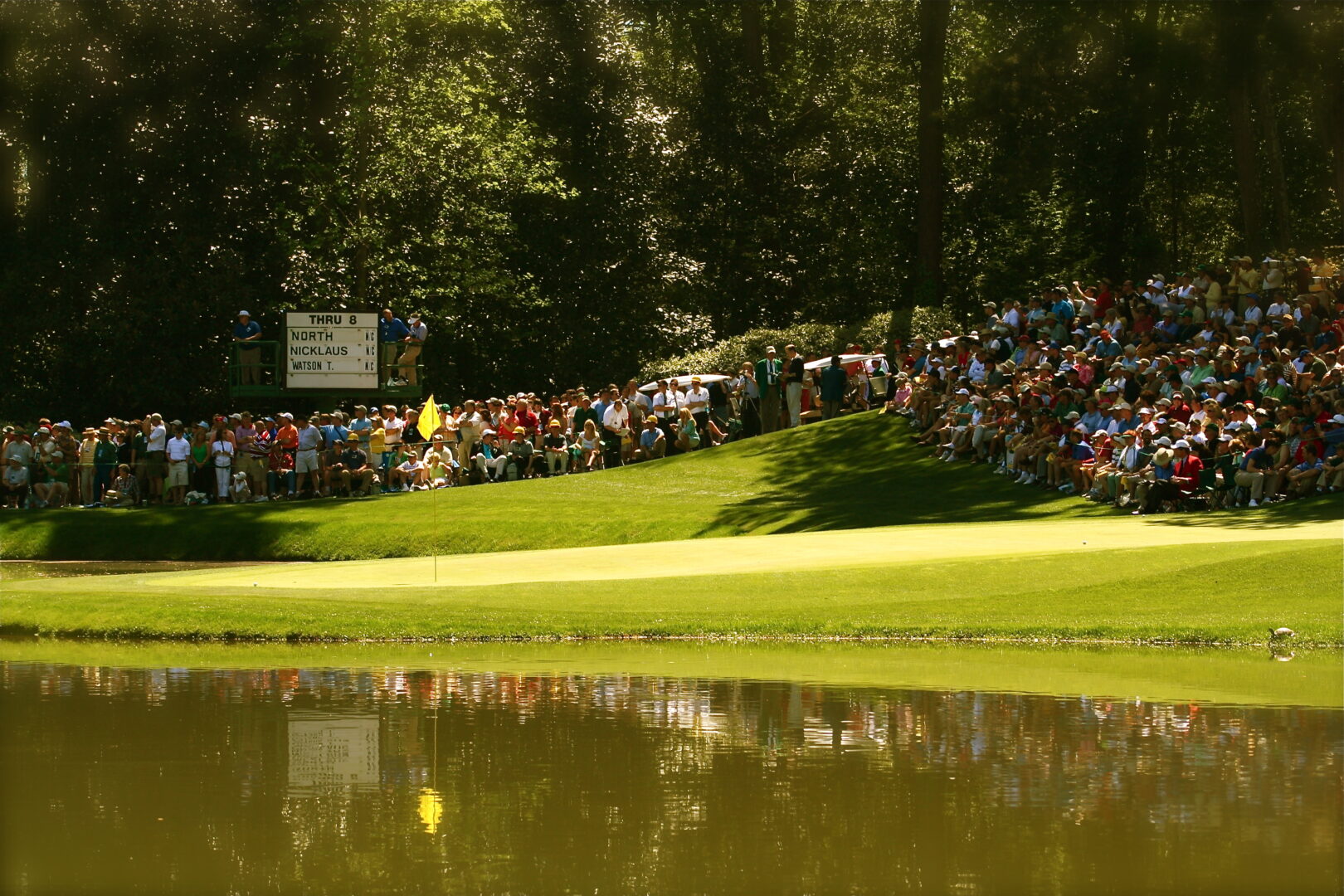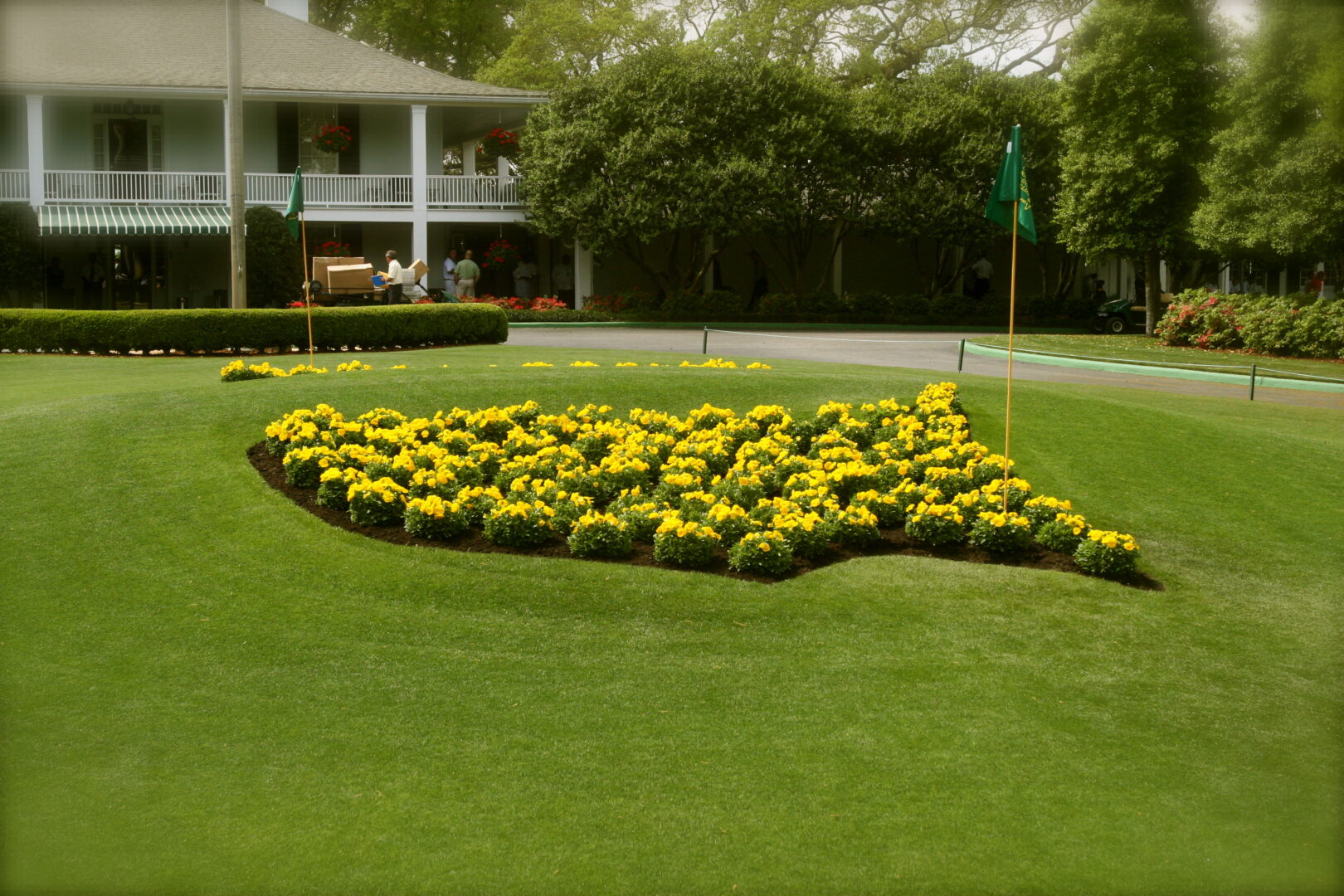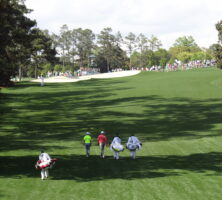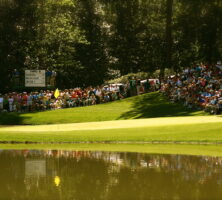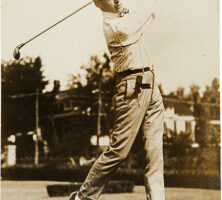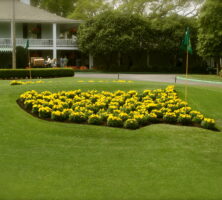First played in 1934, the Masters Tournament is one of golf’s four “major” events, alongside the U.S. Open, the British Open, and the PGA Championship. The tournament is staged every April at the Augusta National Golf Club in Augusta.
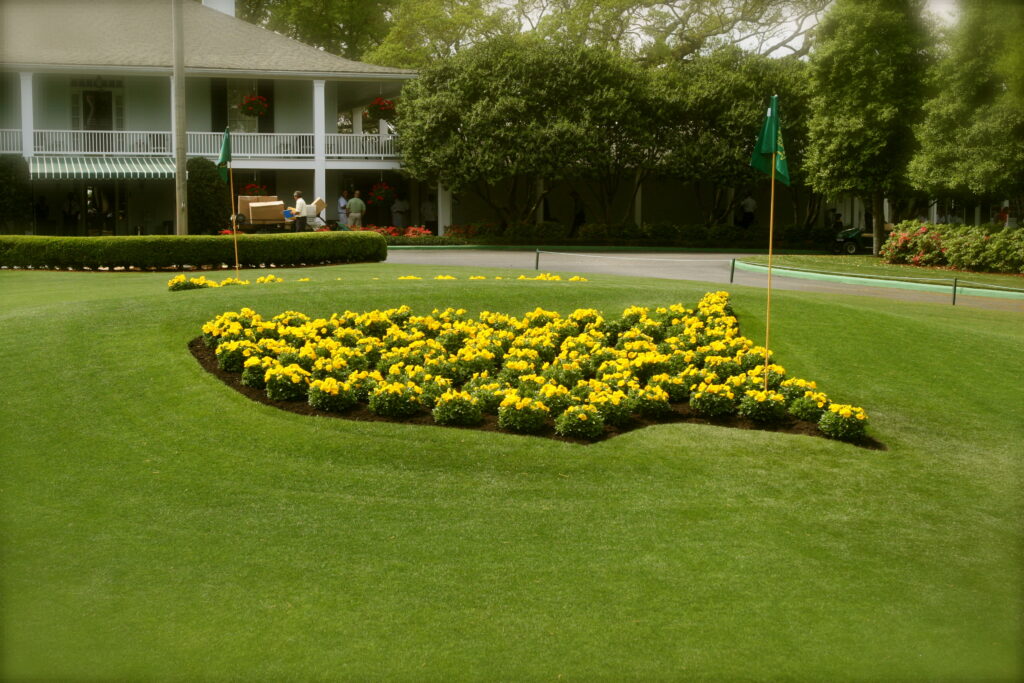
Origins
The Augusta National Golf Club dates back to 1931, the height of the Great Depression, when two men joined resources to create the club. One of the club’s founders was the outstanding amateur and Atlanta native Bobby Jones, winner of thirteen major championships between 1923 and 1930. After winning the Grand Slam in 1930 (all four major titles: U.S. Open, U.S. Amateur, British Open, British Amateur), the twenty-eight year old announced his retirement from competitive golf. During the next several years he was involved in several carefully selected golf projects, one of which was the Augusta National.
Less prominent than Jones but no less important to the success of the club and tournament was New York financier Clifford Roberts, who had befriended Jones in the mid-1920s. Whereas Jones brought the venture credibility and publicity, Roberts brought it business acumen. In the midst of the depression, Roberts skillfully sold the concept of a national golf club to a handful of investors and raised the capital necessary to purchase land and begin construction of the course. The famous golf course architect Alister Mackenzie worked with Jones on designing the Augusta National course. Mackenzie, designer of such world-renowned layouts as Cypress Point in northern California, complemented Jones because they agreed on many fundamentals of golf course architecture.
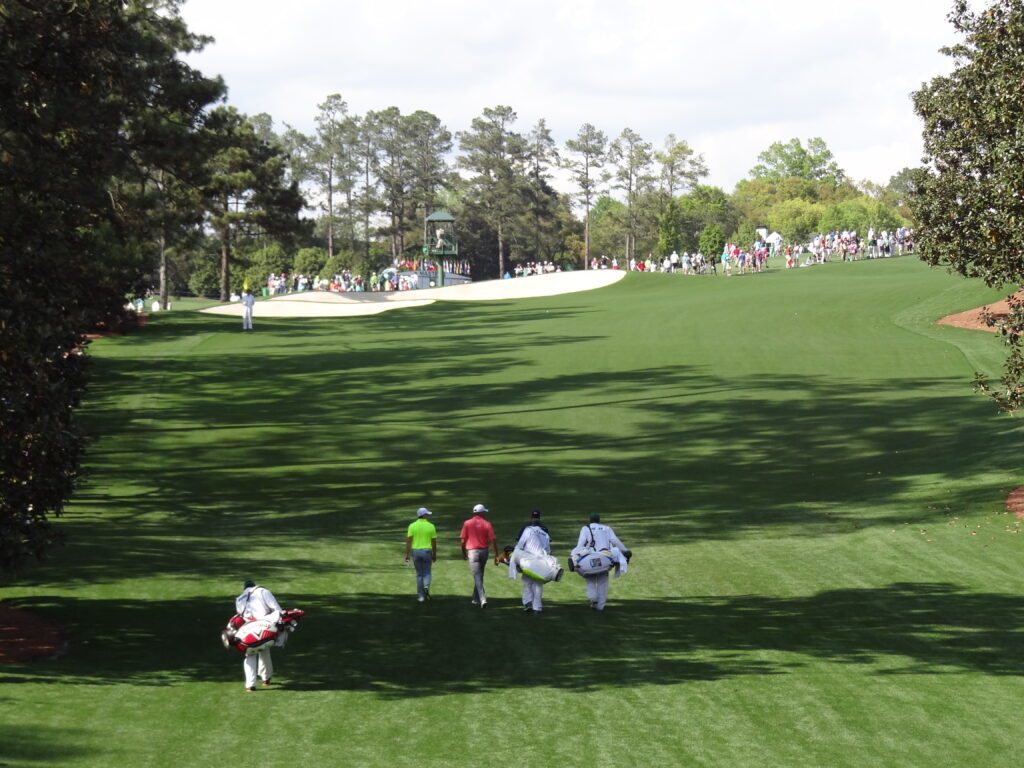
They discovered Fruitland (Berckmans Nursery), the abandoned 365-acre plant nursery near Augusta, where, among other things, peaches were grown by Prosper Berckmans. Because of the depressed economy, the land, originally a plantatation, was available at bottom-dollar price. Jones decided that it was the ideal location for a golf course. While Roberts handled the finances, Jones and Mackenzie oversaw the construction of the course, which began in 1931 and was completed in 1932.
Within months of its completion Roberts and Jones discussed the possibility of hosting a major tournament, such as the U.S. Open; however, scheduling conflicts and climate—Augusta was too hot to host the U.S. Open, traditionally held in the summer—ultimately prohibited that idea. Yet Roberts remained determined; if they could not hold a national open, then why not stage an annual invitational event hosted by the legendary Bobby Jones? To make the event even more viable, Roberts proposed that Jones enter the tournament, coming out of retirement for a week each year to compete against his old opponents and friends. At first Jones resisted the idea of competing, but Roberts convinced him that the excitement surrounding his participation might make the difference between the survival and failure of the tournament. Jones very much wanted the tournament and club to succeed, so he agreed to play.
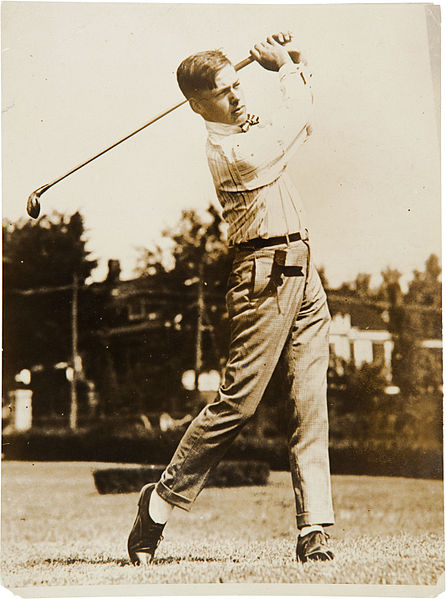
Roberts had been correct. The first Augusta National Invitation Tournament was held in the spring of 1934; it was won by Horton Smith (Jones finished in thirteenth place) and was an instant success. The following year Gene Sarazen scored a double eagle two on the par five fifteenth in the final round to force a play-off with Craig Wood, whom Sarazen defeated the next day to win the tournament. In 1939 the tournament officially changed its name to the Masters.
The natural beauty of the course’s eighteen holes—each adorned with the plant from which it gets its name—and the fact that the golf calendar did not already include a major event during those months made spring the ideal time for the Masters to be held. Moreover, early April was the best time to catch the nation’s sportswriters as they returned north from baseball’s spring training in Florida. A few days in Augusta provided them a respite from their travels and from the national pastime. In sum, the schedule, the weather, the environment, the competition, the business leadership of Clifford Roberts, and the presence of Bobby Jones all combined to make the Masters a success from the beginning.
Rise in Status
Although it became a regular stop on the professional tour in the 1930s, the Masters was not immediately recognized as one of golf’s major events, a fourth component of a modern Grand Slam. Several factors helped the tournament evolve into that prestigious position in the 1950s: the support of Dwight D. Eisenhower, who often played at the club during his presidency; the tournament’s success with the emerging medium of television; and the annual presence of such stars as Ben Hogan, Arnold Palmer, and a bit later, Jack Nicklaus.
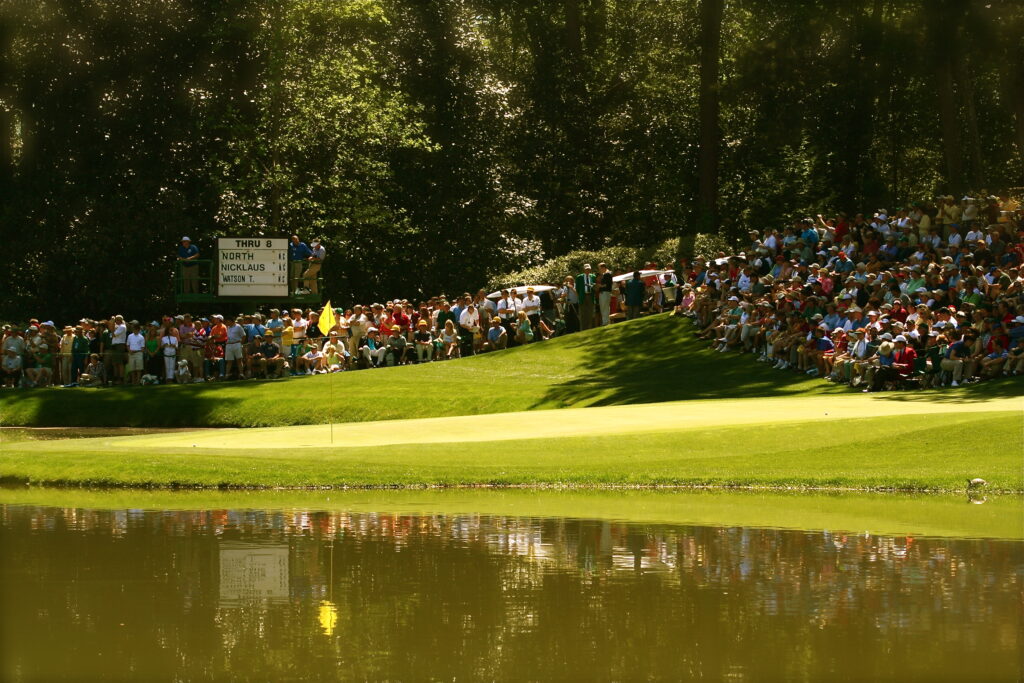
The Masters was a pioneer in many respects. Roberts devised the over-under (+/-) to par scoring system. In 1949 Jones and Roberts originated the post-tournament ceremony in which the defending champion presents the new champion with the coveted green jacket. The Masters was the first golf tournament to be televised, in 1956 on CBS. In time, other tournaments adopted many Masters innovations.
Controversy
In spite of its rise to major tournament status and success with television, the Masters became a target of controversy in the 1960s because of the Augusta National club’s general exclusivity and, in particular, perceived racism. As club chairman, Roberts seemed determined to make it difficult for any Black player to enter the Masters; at best, he was extremely careful about the qualification procedure and insensitive to the obstacles Blacks faced in professional golf. The exclusionary tournament policies, the fact that Augusta National had no Black members, and the Old South aura surrounding the club and tournament made the Masters a focal point for the issue of racism in golf. The entry of the first Black player, Lee Elder, in 1975 and the death of Clifford Roberts by suicide in 1977 (Jones had passed away in 1971) did much to diffuse the criticism, allowing the Masters to develop a more positive public standing.
In the early 2000s controversy again visited the Augusta National Golf Club as women’s groups began to target the all-male club for alleged gender discrimination. In 2012 former U.S. secretary of state Condoleeza Rice and South Carolina businesswoman Darla Moore became the first women admitted to the club.
Uniqueness
The Masters continues to grow in prestige and popularity. It remains the only major golf tournament staged every year on the same course, a feature that provides the event a sense of continuity and familiarity lacking in the other major tournaments. Recent competitive highlights include Jack Nicklaus’s unprecedented sixth victory in 1986; Australian Greg Norman’s heartbreaking losses; Tiger Woods’s spectacular victories in 1997, 2001, 2002, and 2005; and Jordan Spieth’s disastrous twelfth hole quadruple-bogey seven in 2016. The Masters has long taken pride in the international makeup of its fields. It continues to draw the world’s best golfers annually to northeast Georgia for what has become one of the world’s finest golf tournaments.
